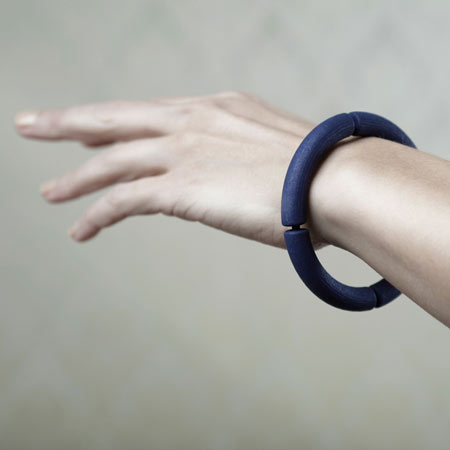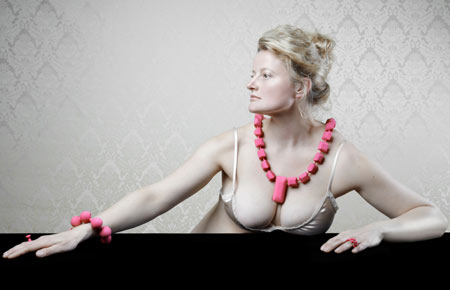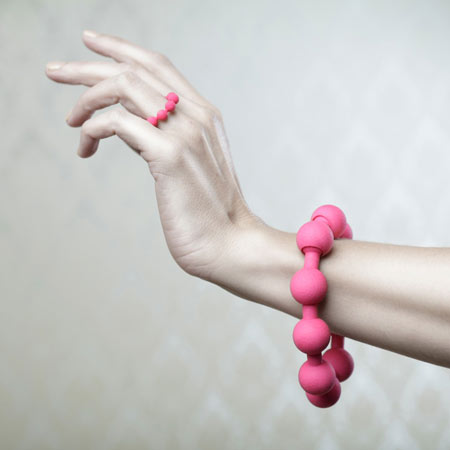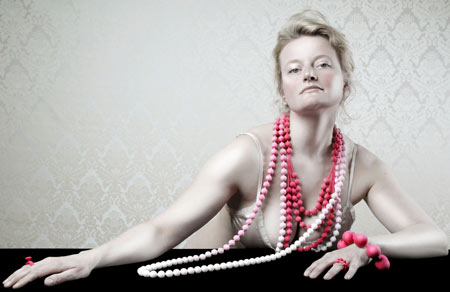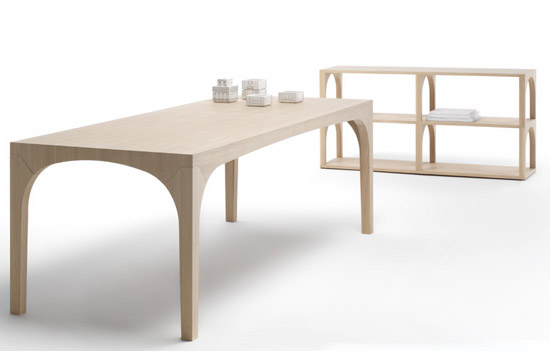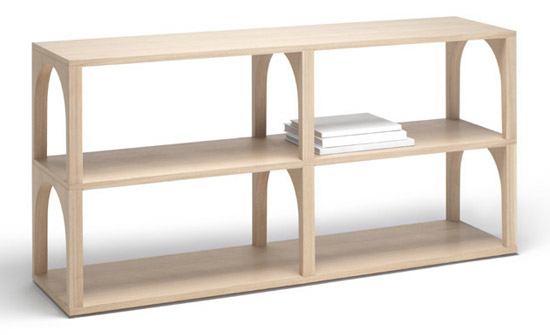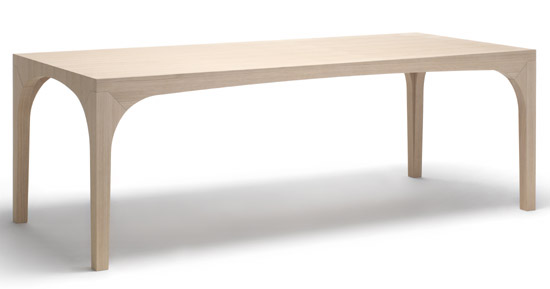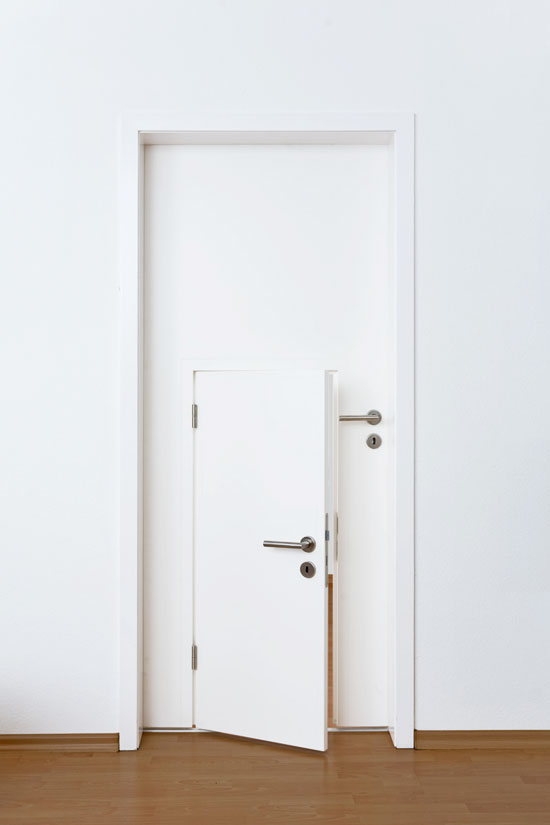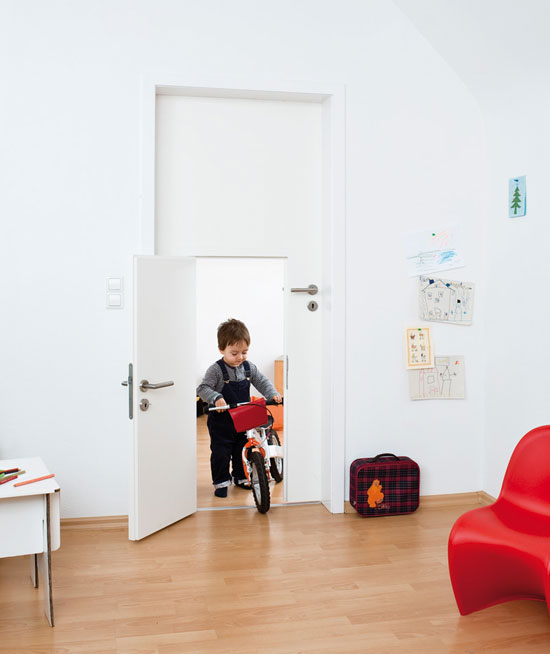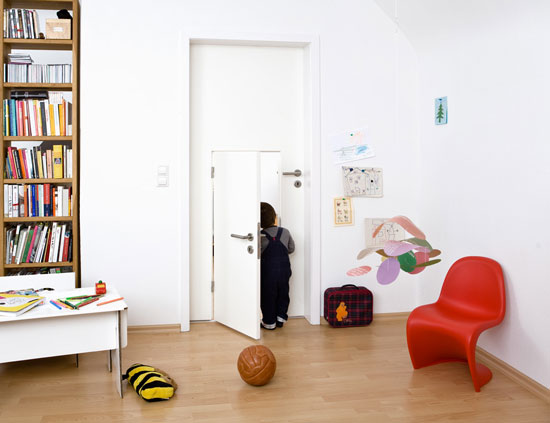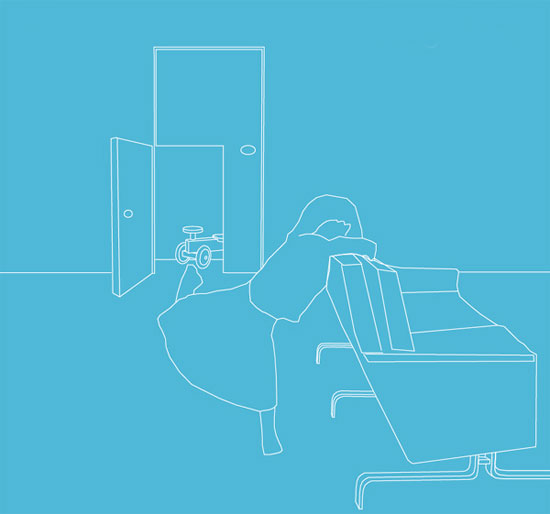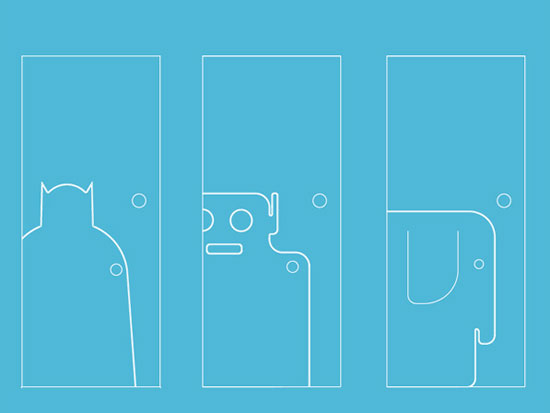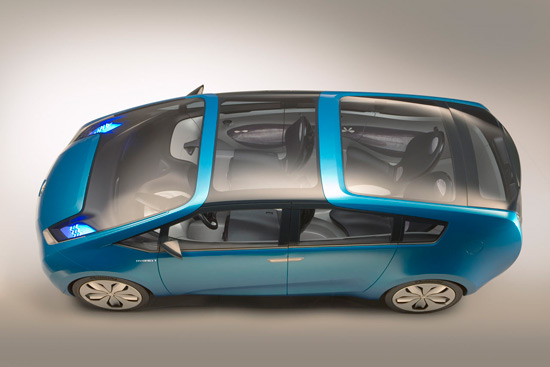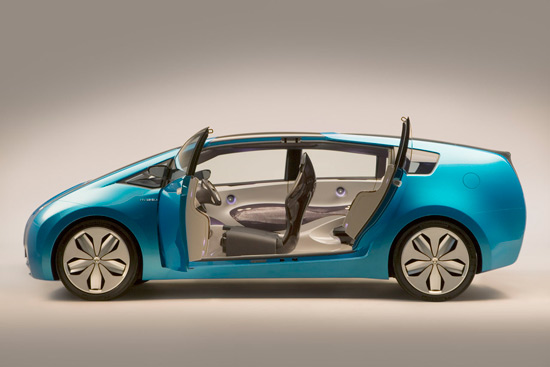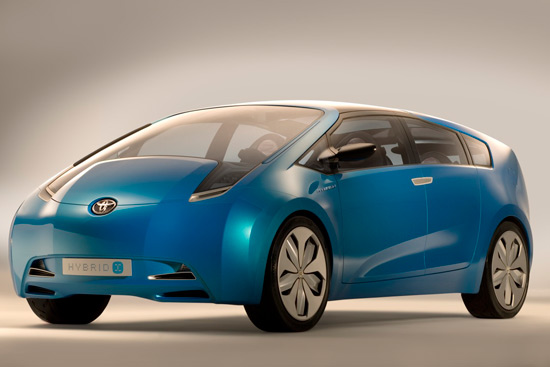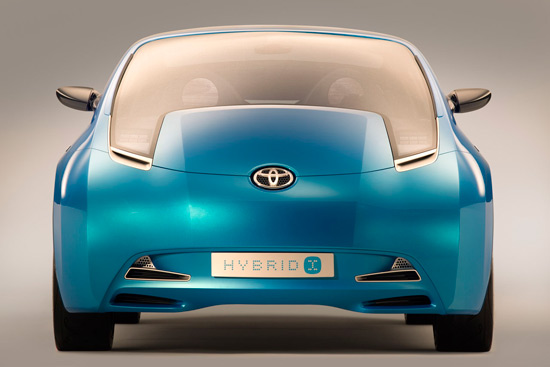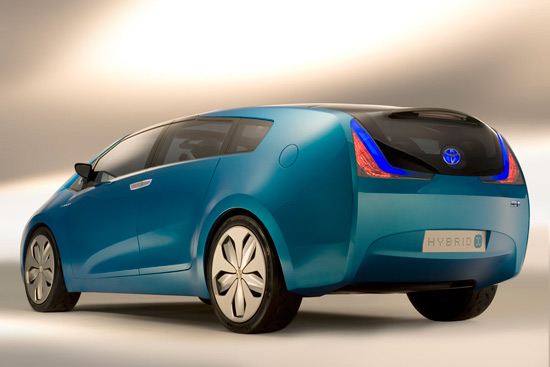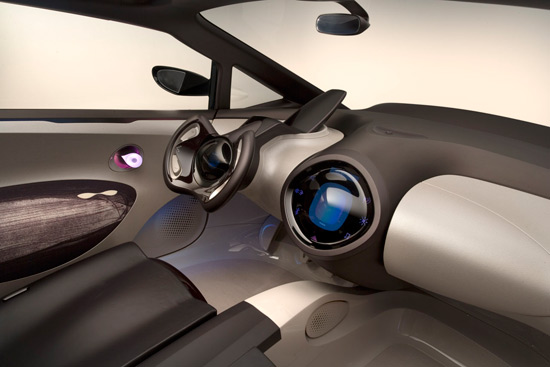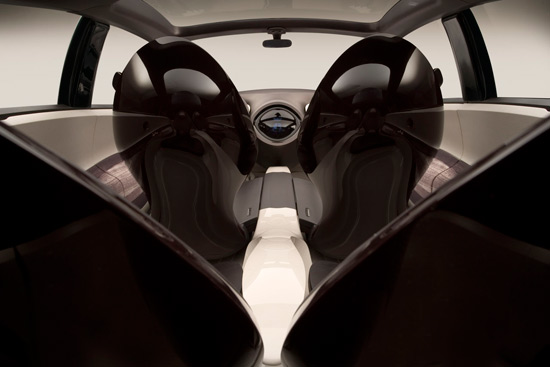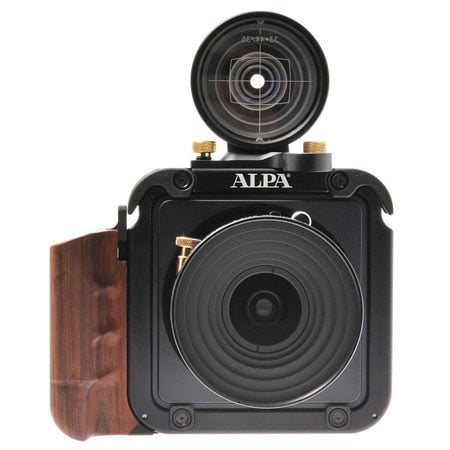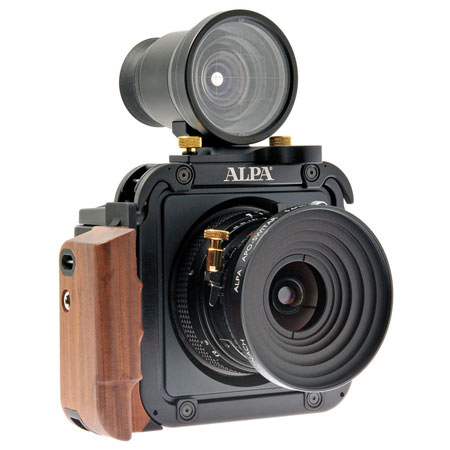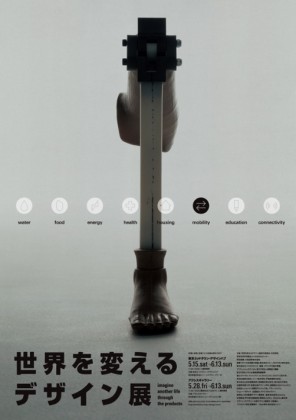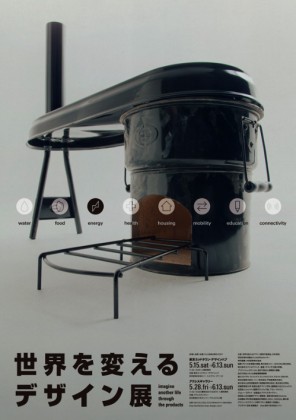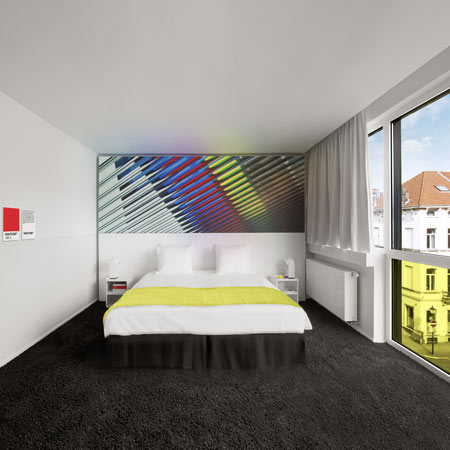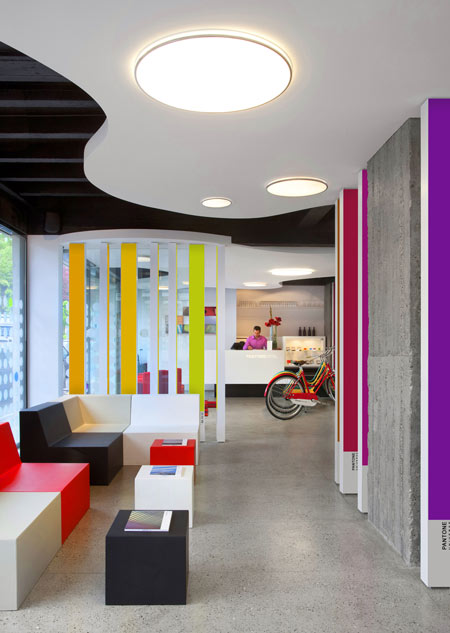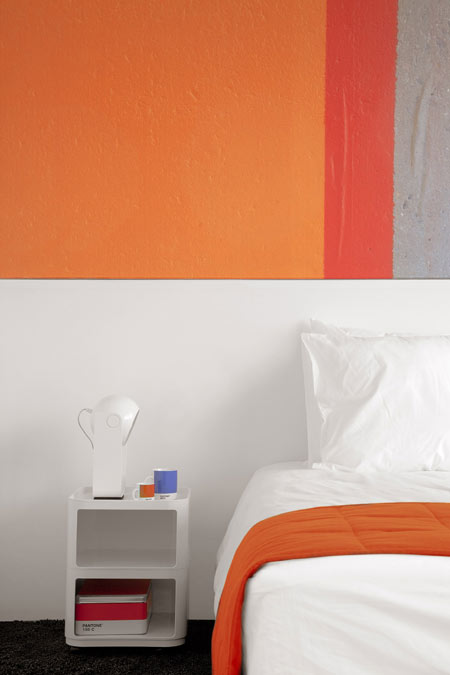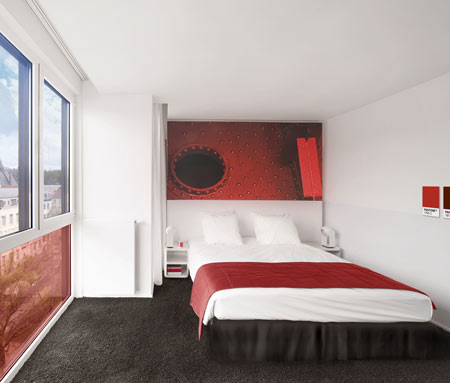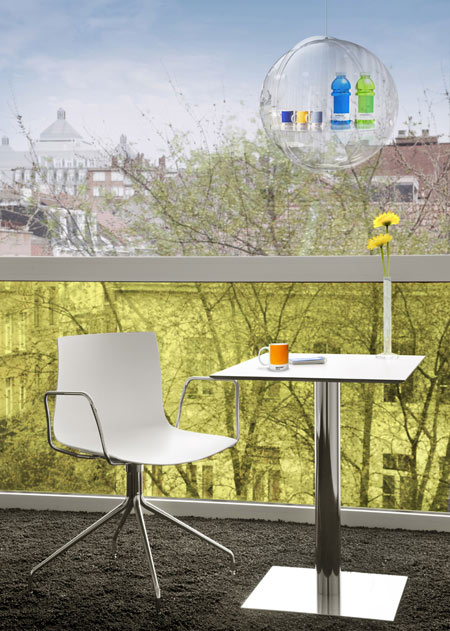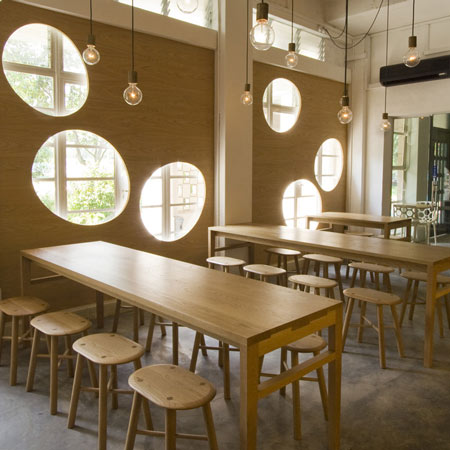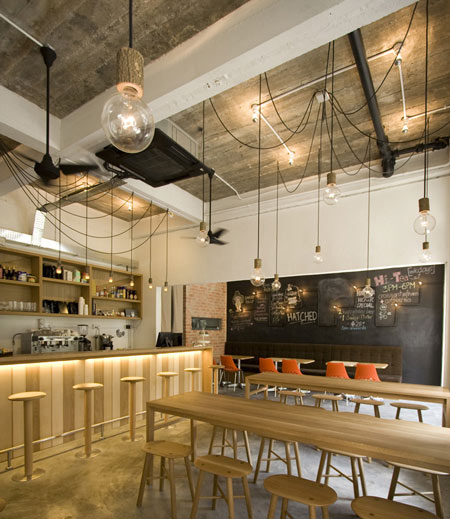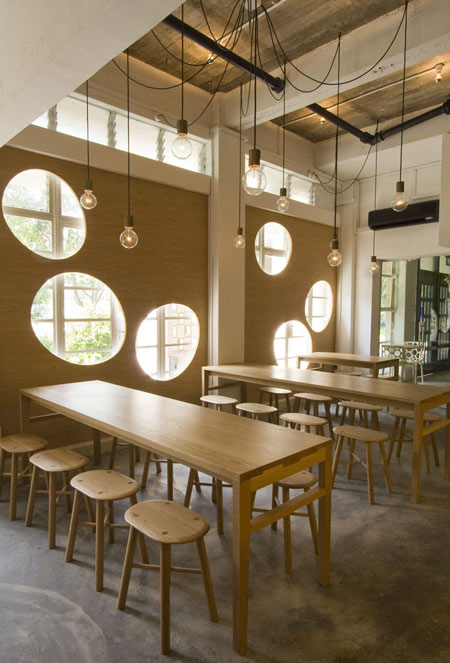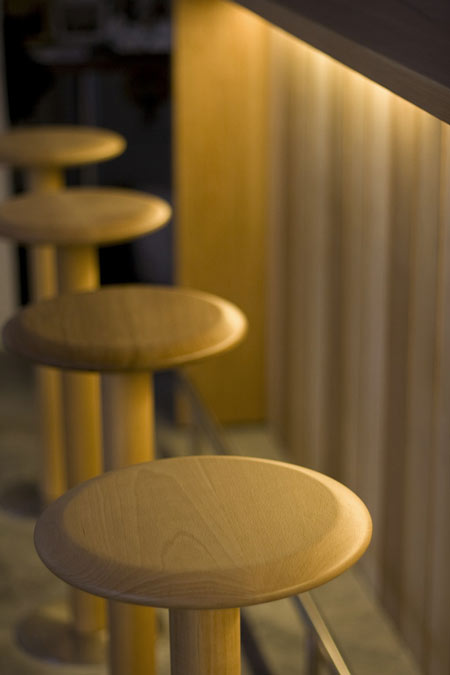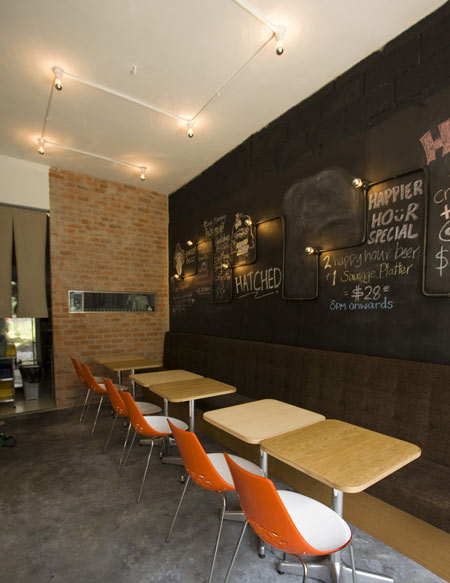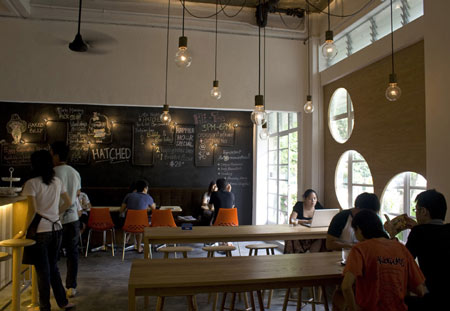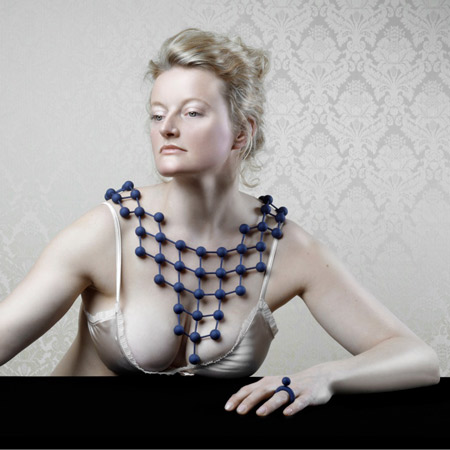
New York designer Alissia Melka-Teichroew of
byAMT has designed a collection of jewellery made up of ball-and-socket joints, like those usually found in hip replacements.
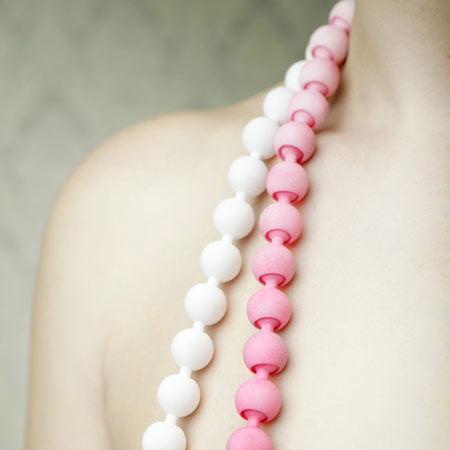
Called Jointed Jewels, the pieces are made using 3D printing process laser sintering, where a ball can be ‘printed’ inside another one.
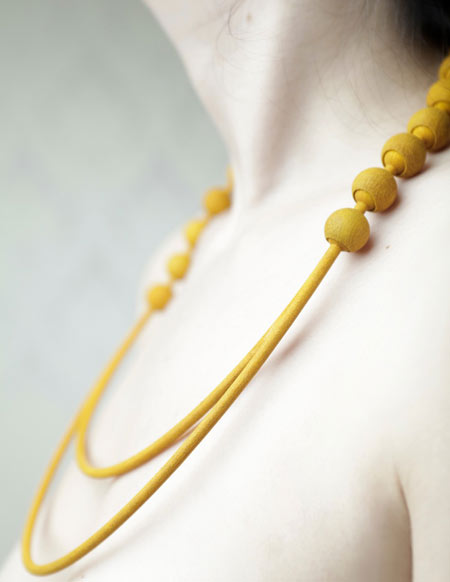
Photographs are by
Lisa Klappe.

Here’s some more information from Melka-Teichroew:
Jointed Jewels represents a union of new and old, organic and industrial, functional and decorative.

At the heart of the project is the intention to transform complex and separate elements into a new kind of whole.
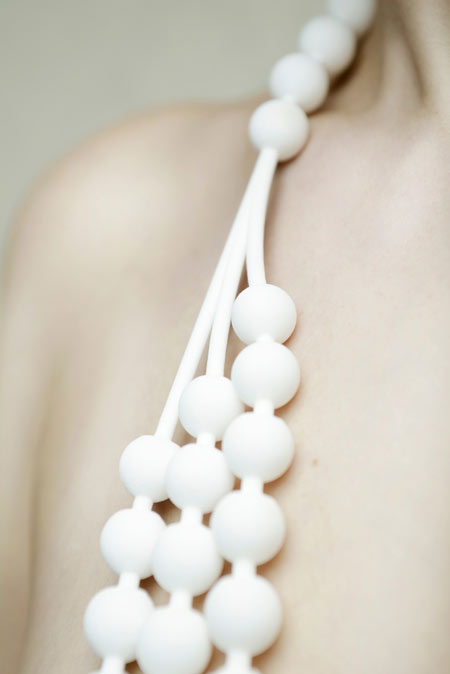
It started as an exploration of ball joints, commonly found in cars and hip replacements.
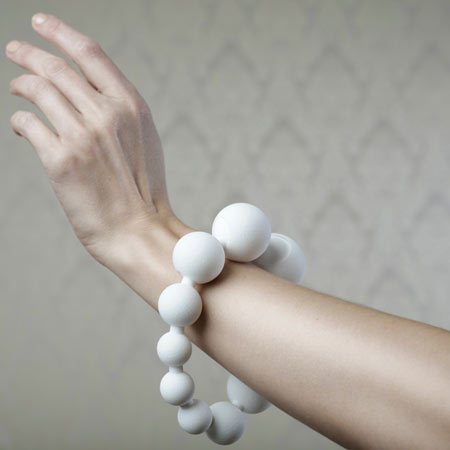
Alissia Melka-Teichroew had the idea of creating a ball joint -normally assembled with separate parts- as one single piece.
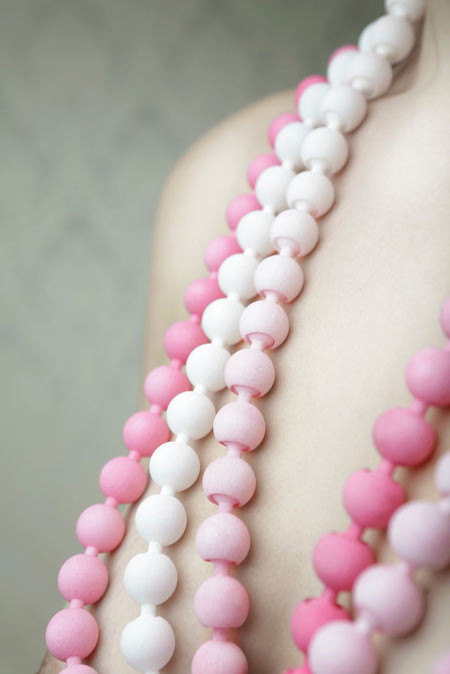
Through the use of selective laser sintering (SLS) she was able to literally make a ball inside a ball.
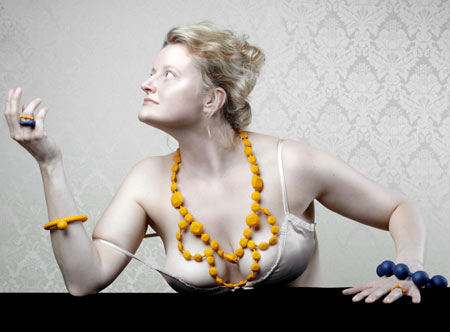
Hence, the industrial connecter was transformed into an object of beauty and wonder.
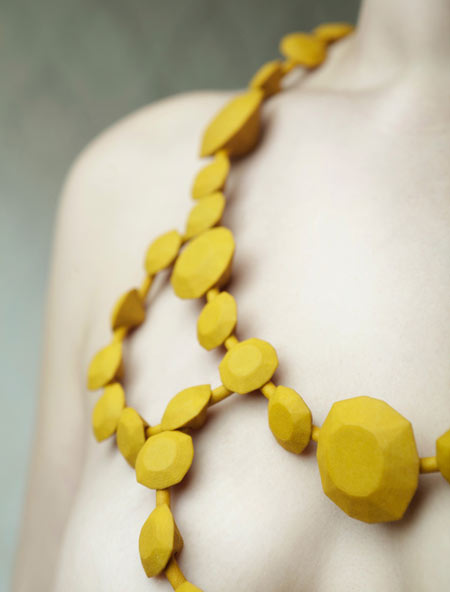
A clean and striking jewelry collection was created around this innovative concept.

Each piece has been made with the same technique: it seems like an intricately assembled object but is in fact one single piece that was made in one go.
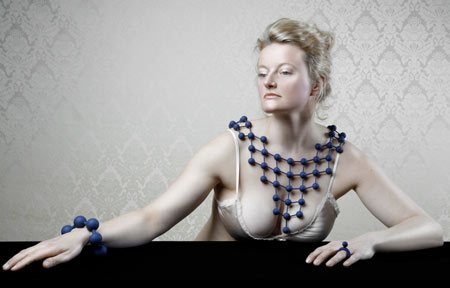
Although the jointed pieces share the same birthing process, each item has a different identity.
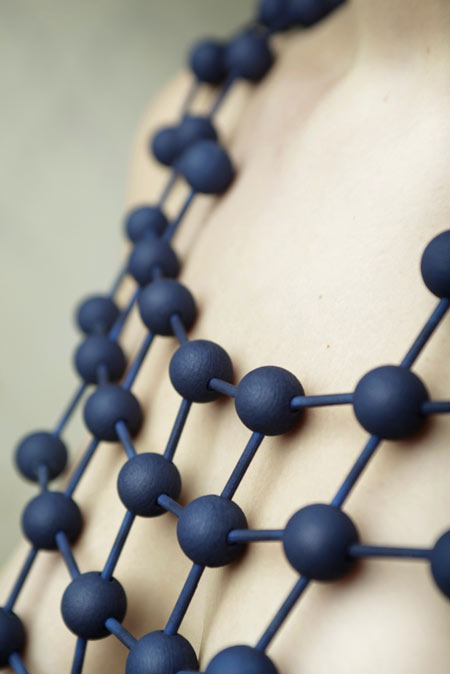
There are round, square, long and tubular forms that pick up references from recognizable icons of classic jewelry.
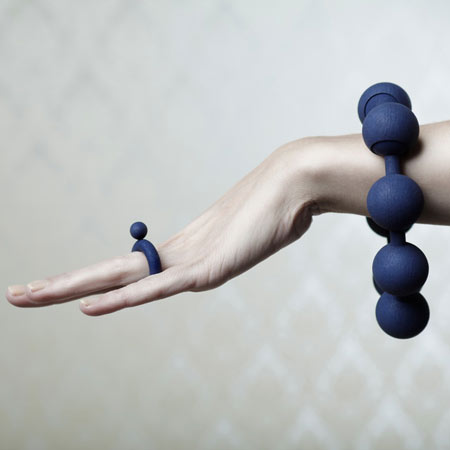
Many of the bangles, necklaces and rings are interpretations of renaissance and Victorian jewels and there are also references to intricately made and very precious pieces by luxury brands like Bulgari and Cartier.

In addition, there are multi-tiered necklaces that display connecting joints that resemble human bone structure.
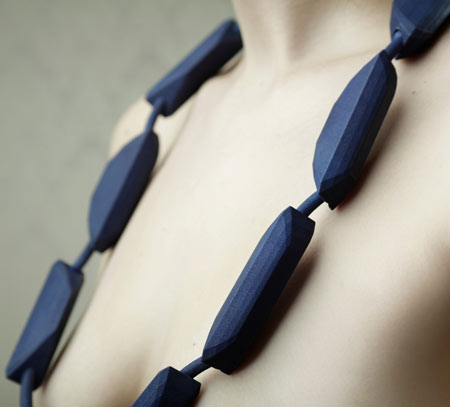
The collection features both colored and white jewelry.
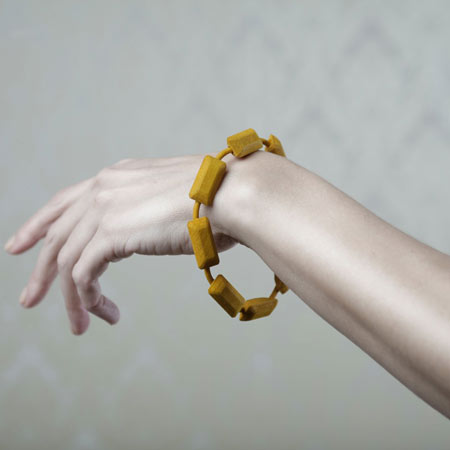
A special rendition of the colors dark blue/grey, pink, and yellow were presented during the Salone del Mobile 2010 in Milan (Italy) and ICFF 2010 in New York (USA).
